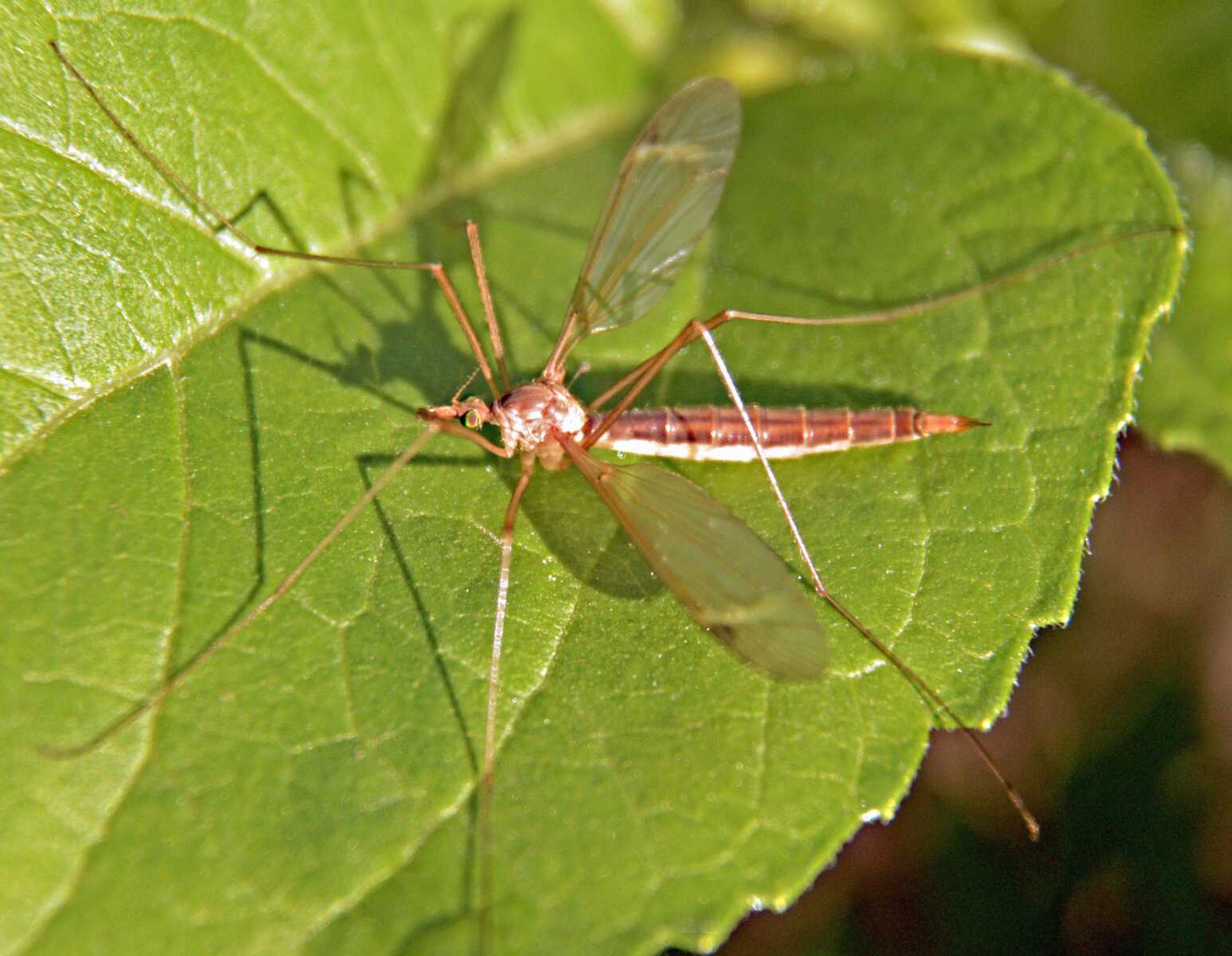Is it a mosquito? Not exactly
This insect looks like a big mosquito, but it isn't. It doesn't bite like a mosquito either. In fact it will not bite you at all. This is a crane fly. A crane fly is a poor flier and is pretty easy to catch. Even a slight breeze may force it to land. Its gangly legs and lack of strength makes it an easy target for orb weaver spiders. Once a leg is snared in the web, the crane fly is doomed, seldom being able to free itself...
This insect looks like a big mosquito, but it isn't. It doesn't bite like a mosquito either. In fact it will not bite you at all. This is a crane fly.
A crane fly is a poor flier and is pretty easy to catch. Even a slight breeze may force it to land. Its gangly legs and lack of strength makes it an easy target for orb weaver spiders. Once a leg is snared in the web, the crane fly is doomed, seldom being able to free itself.
The larvae of the crane fly sometimes lives in water, but most often it lives in the ground where it eats roots of small plants and grasses. The larvae is often called a "leatherback bug." The leatherback makes a good bluegill bait. The toughness of the larva's skin makes it hard for the fish to strip it from a small hook. I have been able to catch as many as four bluegill on one leatherback bug.
There are more than 4,000 species of crane flies spread over much of the temperate world. Sometimes this fly is misidentified as a mayfly. Sometimes it is called a mosquito hawk.
Through the Woods is a weekly nature photo column by Aaron Horrell. Find this column at semissourian.com to order a reprint of the photo. Find more work by Aaron at The Painted Wren Gallery.
Connect with the Southeast Missourian Newsroom:
For corrections to this story or other insights for the editor, click here. To submit a letter to the editor, click here. To learn about the Southeast Missourian’s AI Policy, click here.










